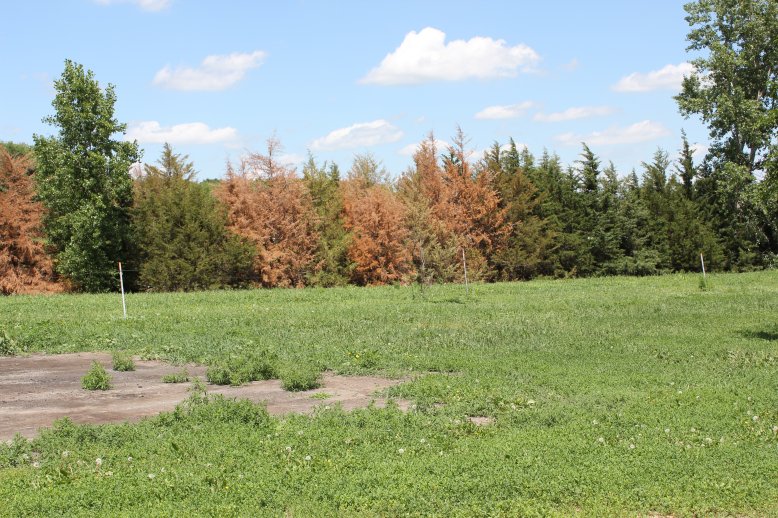
By Rachel Allison, District Forester, Nebraska Forest Service
Some call it the “perfect storm” of low precipitation, high temperatures and extreme wind that has produced serious consequences for western Nebraska trees. What many residents could not detect in the early days of spring is now unmistakably obvious—brown tree tops and dying windbreaks. Even trees often considered drought tolerant are distressed. It is apparent that our trees rely heavily on periodic moisture.
“Even though homeowners are aware of the drought, many are unaware of the consequences for their trees. Most assume the scarce rainfall will sustain their more mature trees because they believe their trees are established,” said Rachel Allison, district forester with the Nebraska Forest Service.
Trees planted within the last 10 years are particularly at risk during prolonged drought, and unfortunately 2012 precipitation totals for many communities was barely half or less.
Reports of dying trees in western Nebraska have tripled, according to Allison. Spruce trees have been especially hard hit. Although a popular tree and often thought of as well-suited to western Nebraska, spruce often take quite a bit of water to perform well.
Other conifers such as pine, juniper, and redcedar also have been affected, especially trees in windbreaks. Some trees have died outright, while others have only suffered varying degrees of winter desiccation or windburn, where only the needles have turned brown. The difference among trees may be due to initial health of the individual trees—trees that died may have had poorly developed root systems or trunk injuries. The presence of healthy buds and new growth this spring will identify those trees that have survived.
Deciduous trees that are leafing out now may show dieback near the top of the tree because of the drought. Leaves that do expand may be smaller than usual. Last summer’s symptoms of leaf scorch, browning and early defoliation on trees such as ash, maple, linden and hackberry may be repeated this year if the drought continues.
In addition, pest problems will likely increase as a result of the drought. Small, scattered holes in the trunk and branches are evidence of borers and bark beetles—two groups of insects typically attracted to drought-stressed trees. Bark stripping by woodpeckers feeding on these insects also may be present. Drought-stressed trees also are susceptible to canker diseases, which cause scattered branch death and top kill.
The cumulative effect of low rainfall and high temperatures on trees depends on their location in the landscape or environment. Typically, trees remain healthy in high-maintenance yards that are deeply watered once or twice per week. Trees that show drought stress typically are either in lawns that are watered every morning for only a minimal amount of time or in lawns that are not watered at all. In these situations the trees are unable to pull enough water from the soil because the moisture isn’t there.
Is it too late to help these trees? One way to check soil moisture is to push a long (12-inch) screwdriver or metal rod into the ground. If you can only push the screwdriver in 2-3 inches, the soil is definitely dry and your trees need water. Run a sprinkler or soaker hose for several hours beneath the tree canopy and beyond, and then test the soil again. The screwdriver should go 10-12 inches into the soil.
Checking the soil monthly throughout the year and providing a slow, deep watering when needed will help your trees withstand the drought so they can continue to provide shade, beauty and shelter for many years to come.
For information about trees and drought, see the Nebraska Forest Service series on the website at http://nfs.unl.edu/program-foresthealth.asp. Or contact your local UNL Extension Office.